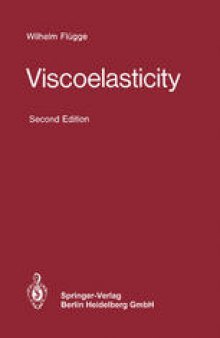 جزییات کتاب
جزییات کتاب
ویسکوالاستیسیته خاصیت دستهای از مواد است که رفتاری میان دو خاصیت کلی ویسکوز بودن و کشسان بودن از خود نشان میدهند و این خاصیت به هنگام تحمیل نیروی خارجی و اعمال تغییر شکل بر آن پدیدار میشود. مواد ویسکوز، مانند عسل، در برابر تنش اعمال شده، پاسخهایی به صورت جریان برشی و کرنش (تغییر شکل طولی) با تغییرات خطی نسبت به زمان از خود واکنش نشان میدهند. مواد کشسان، مانند آهن نیز به هنگام رویاروی با تنش، به آرامی کشیده میشوند و در صورتی که میزان تنش از آستانه کشسانی آنها فرارتر نرفته باشد، به محض برداشته شدن تنش، به وضعیت اولیه خود بازمیگردند. مواد ویسکوالاستیک به مانند نام خود، خواصی از این دو دسته کلی مواد دارند. از جمله داشتن خاصیت مقاومت وابسته به زمان در برابر کرنش. کشسان بودن بهطور معمول ناشی از وجود پیوندهای گسترده مولکولی در سرتاسر صفحات بلوری جامدات و وجود ساختار منظم و سازمانیافته آنهاست، ولی در سوی مقابل لزجت ناشی از نفوذ مولکولها و اتمها به درون ساختار نامنظم سیالات است.
No mathematical theory can completely describe the complex world around us. Every theory is aimed at a certain class of phenomena, formulates their essential features, and disregards what is of minor importance. The theory meets its limits of applicability where a dis regarded influence becomes important. Thus, rigid-body dynamics describes in many cases the motion of actual bodies with high accu racy, but it fails to produce more than a few general statements in the case of impact, because elastic or anelastic deformation, no matter how local or how small, attains a dominating influence. For a long time mechanics of deformable bodies has been based upon Hooke's law - that is, upon thE" assumption of linear elasticity. It was well known that most engineering materials like metals, con crde, wood, soil, are not linearly elastic or, are so within limits too narrow to cover tne range of pl'actical intcrest. Nevertheless, almost all routine stress analysis is still based on Hooke T s law be cause of its simplicity. In the course of time engineers have become increasingly con scious of the importance of the anelastic behavior of many materials, and mathematical formulations have been attempted and applied to practical problems. Outstanding among them are the theories of ide ally plastic and of viscoelastic materials. While plastic behavior is essentially nonlinear (piecewise linear at best), viscoelasticity, like elasticity, permits a linear theory. This theory of linear visco elasticity is the subject of tbe present book.
 دانلود کتاب
دانلود کتاب
 جزییات کتاب
جزییات کتاب








 این کتاب رو مطالعه کردید؟ نظر شما چیست؟
این کتاب رو مطالعه کردید؟ نظر شما چیست؟
